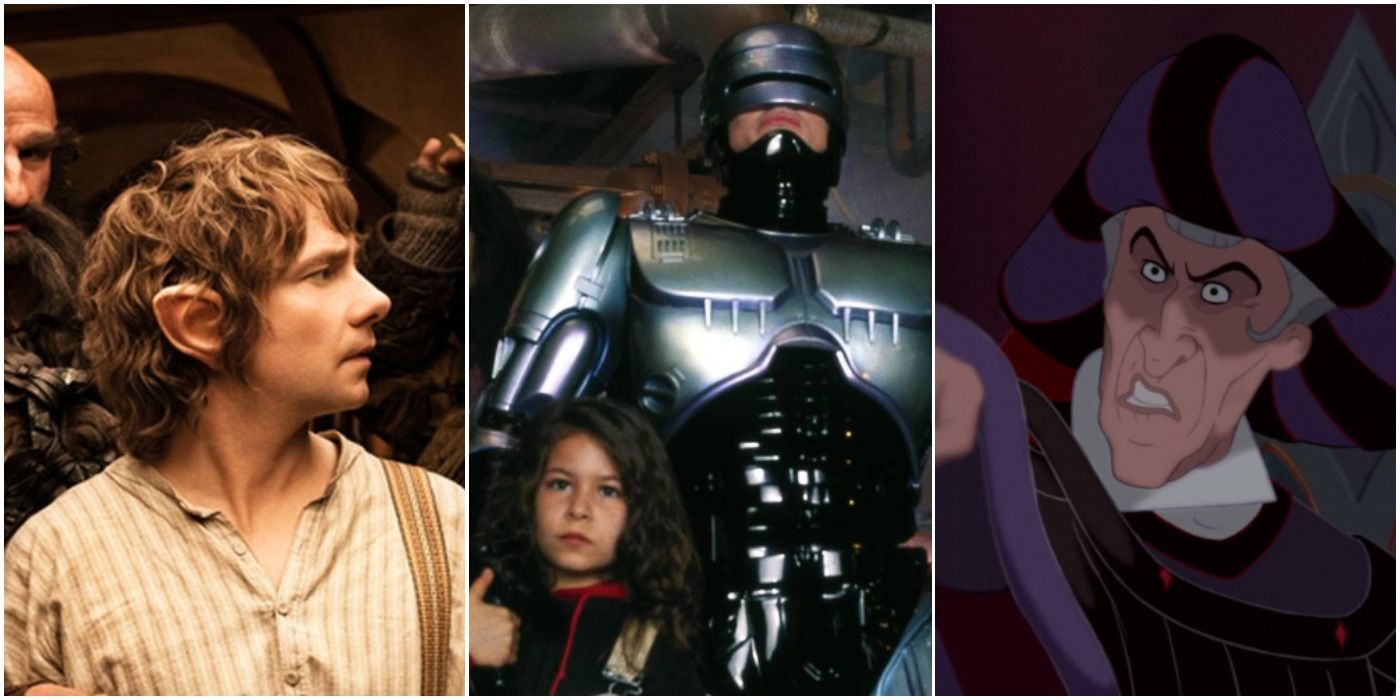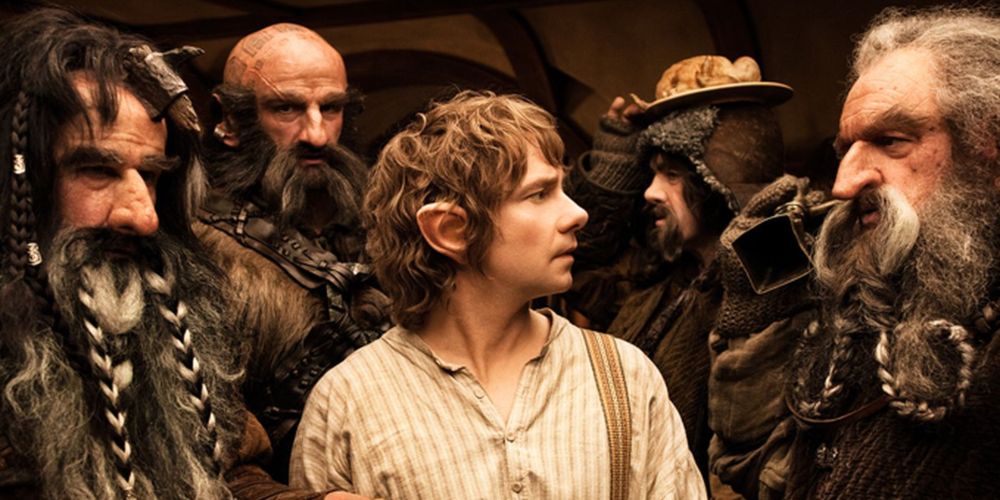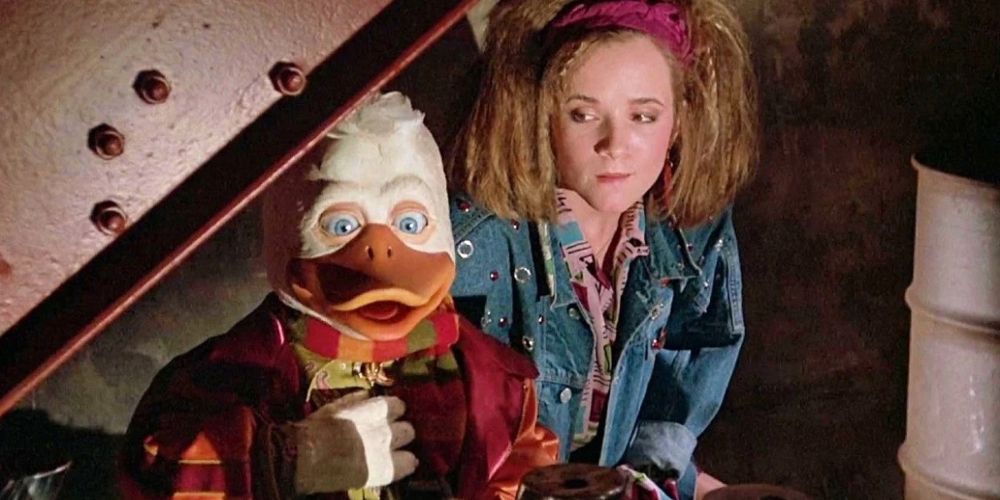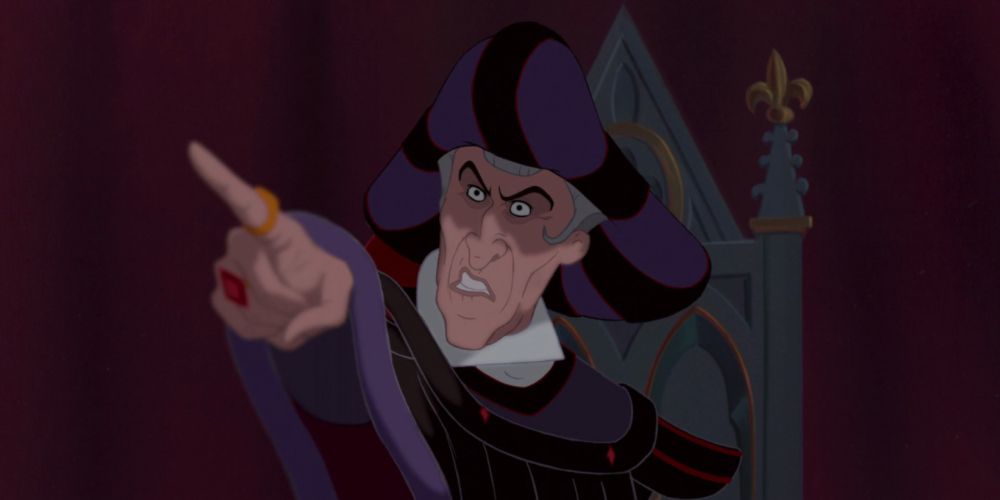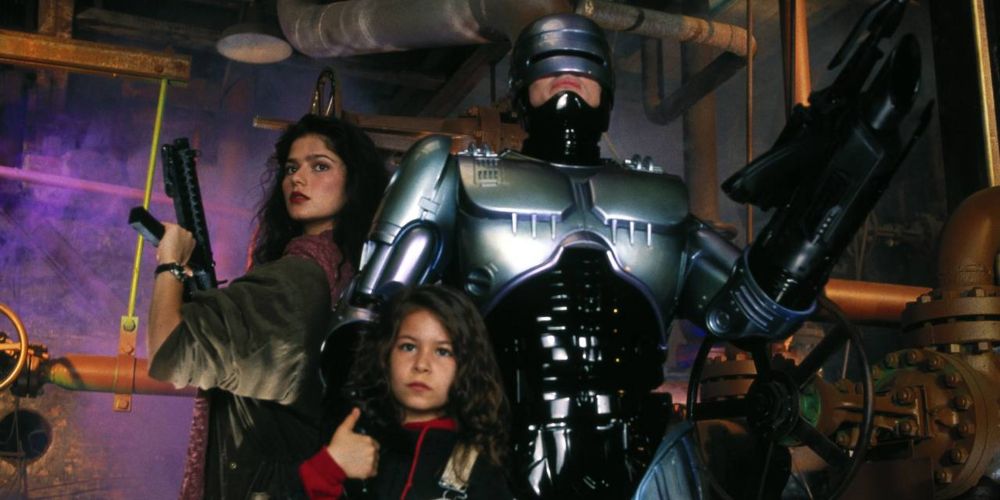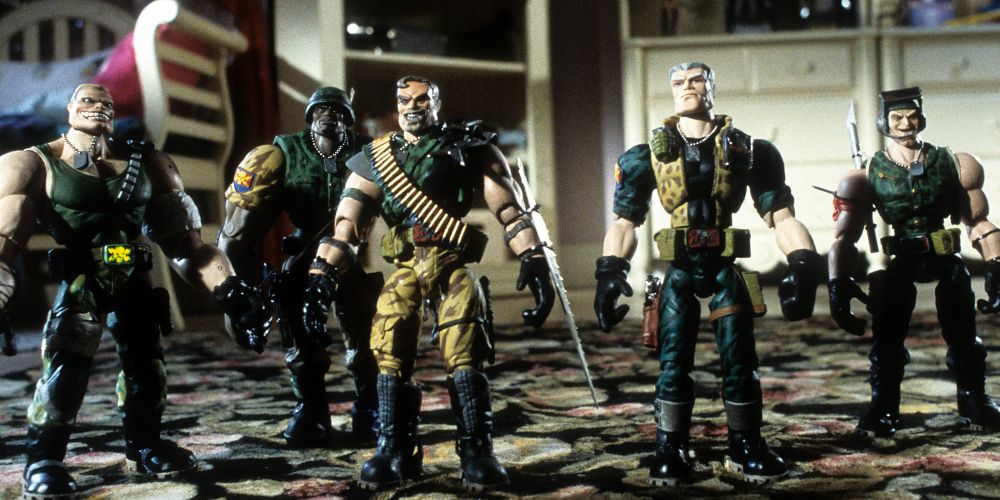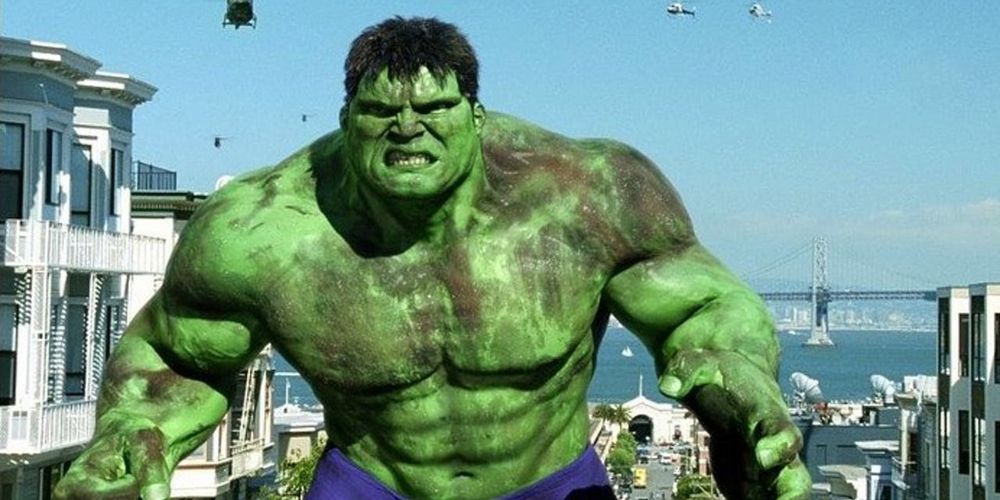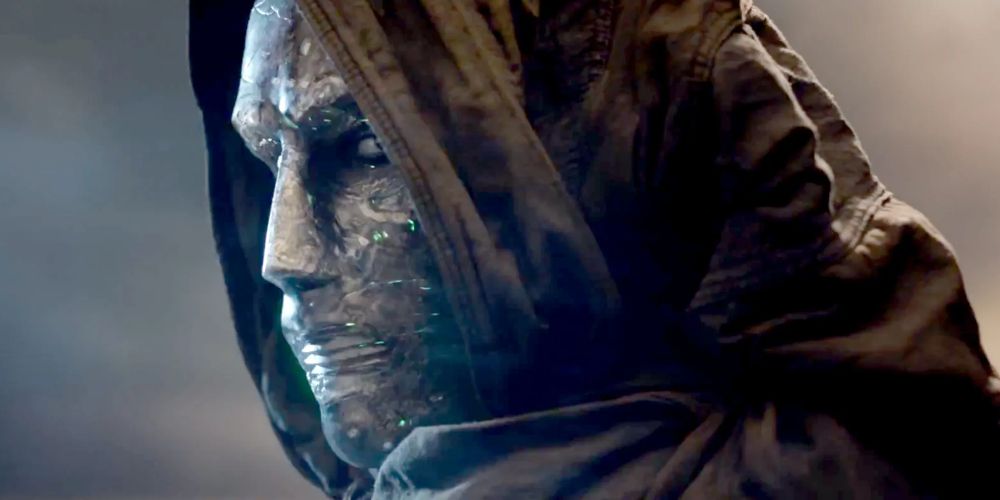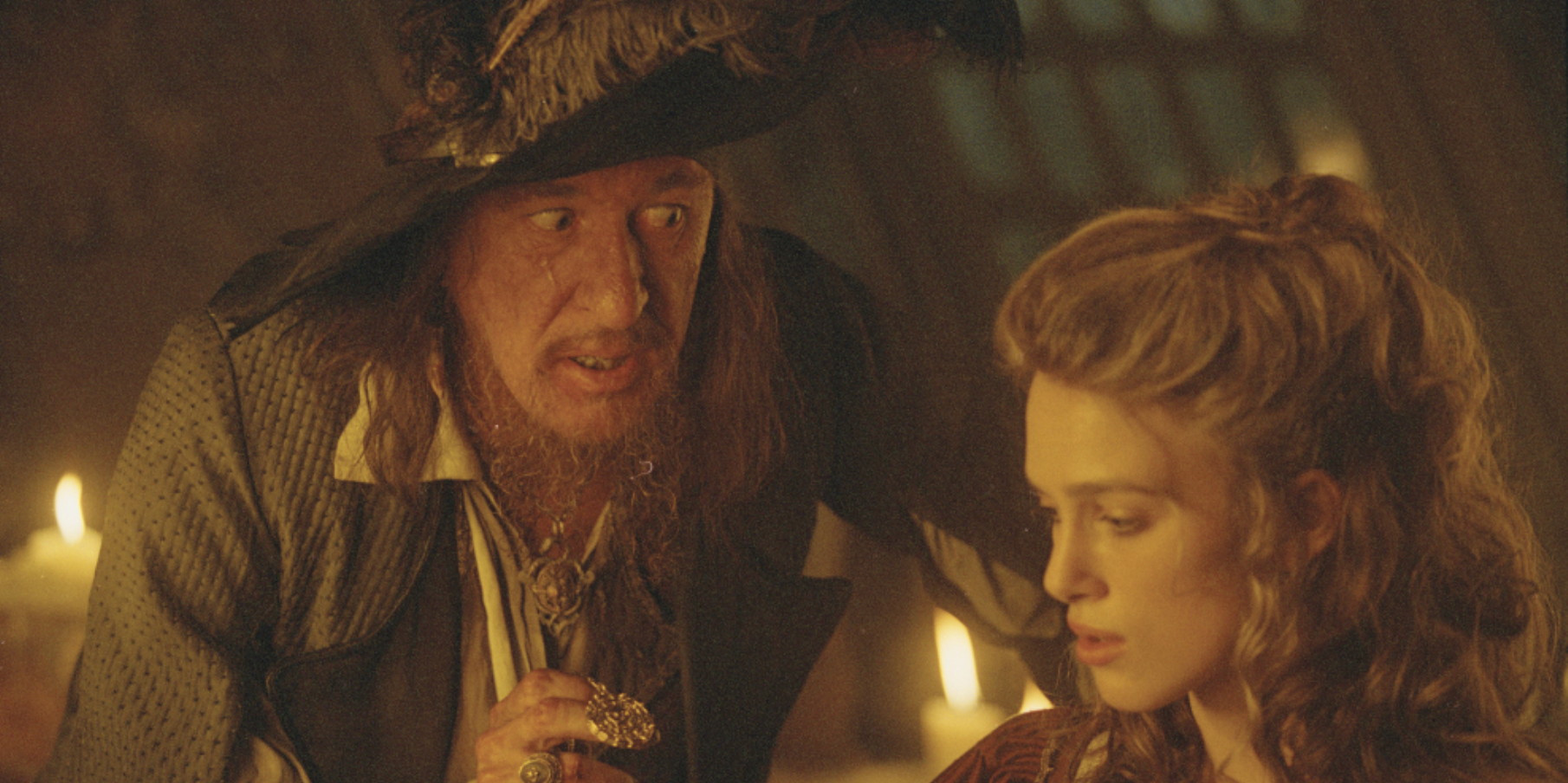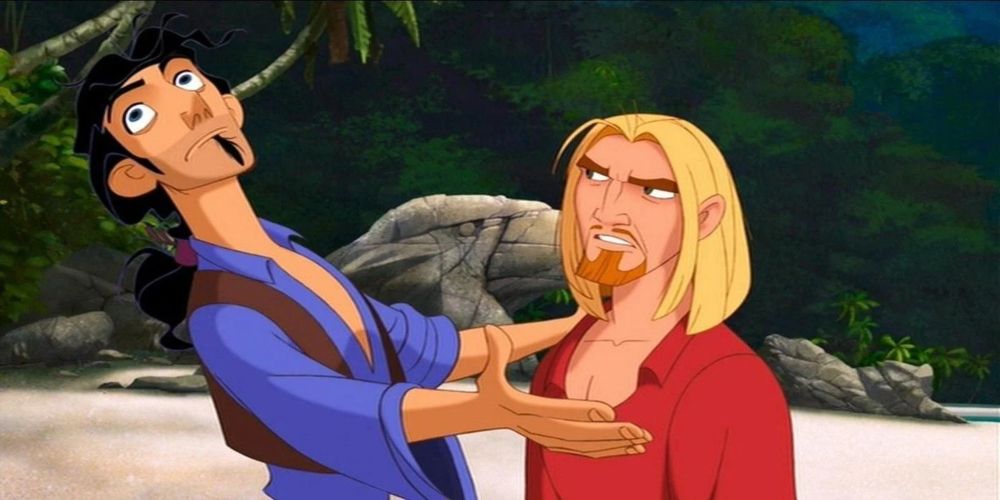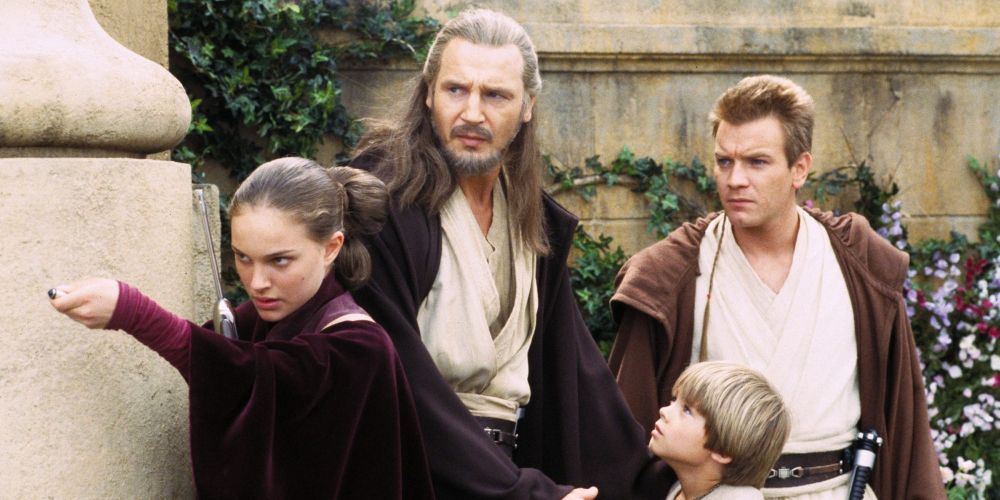Something that is fairly essential when creating a film—or any product—is determining the target audience. Knowing the work's audience influences the production, characters, storytelling, humor, and most crucially the marketing. An adult-themed comedy is going to have a very different trailer to a family-oriented musical, and be advertised in different places.
One of the most obvious differences in audience is whether the film is meant for adults or for children. Although films intended for an entire family—or kids' films with adult fans—do exist, for the most part, these are kept separate. Despite this, some films are unable to decide which age they want to appeal to all the way through production, marketing, and distribution.
10 The Hobbit Was Stuck Between Its Source Material & Predecessor
Unusually for the work that started the most famous fantasy franchise of all time, The Hobbit was a children's adventure book. It focuses largely on a reluctant Hobbit burglar who is forced into a mission to retrieve a magical treasure, and typically does so by avoiding violence at all costs, with some moralizing and plenty of child-themed content along the way.
The Lord of the Rings, both its books and its films, would become a fantasy epic with a grand scope of worldbuilding that discussed serious themes like industrialization, war, and the corrupting nature of power. When Peter Jackson came to adapt The Hobbit, the production ended up stuck between the novel's childish tone, and the expected fantasy epic scale like Lord of the Rings. The result disappointed many.
9 Howard The Duck Repulsed PG Audiences
One of the most notoriously unpleasant comic book movies in existence, Howard the Duck's audience was already a challenging one to find on account of the lead character being a talking animal. Although more accepted in comic books, in films these tend to be reserved for children, and the film in some ways played up to this with a PG rating and childish humor.
The rest of the content put off many potential viewers. Full of sexual innuendos, including more than a few about the topic of bestiality, Howard the Duck ended up being a film that parents didn't want their children to see, but also didn't want to see themselves.
8 The Hunchback Of Notre Dame Has Bits That Stick Out
Often, an uncertain audience results in an unsuccessful and poorly-received movie, but this isn't always the case. The Hunchback of Notre Dame is a film from Disney's renaissance period and has become more well-received over time, but struggles with its tone—something that earned it criticism at the time.
Much of the film is far more serious than a lot of Disney fare, dealing with racial persecution, discrimination against those with disabilities, religious hypocrisy, and repressed urges. In order to better appeal to children, Disney's core demographic, the film was also loaded with slapstick that largely detracts from the picture. Its reputation has improved over time, but these bits are still considered poor.
7 RoboCop 3 Killed A Franchise
RoboCop was a smash hit that created a pop culture icon. It was enjoyed by audiences and critics for its violent action sequences, surprisingly deep plot, and dark comedic satire on then-modern-day America. All of these things made it a strange franchise to try and gear towards children, but RoboCop 3 took a hard pivot towards a younger demographic.
It earned a PG-13 rating by removing much of the grittiness and blood and included more child-friendly elements. As the movie still contained mass gunfights, political skulduggery, and attempts at satire alongside a child hacker and RoboCop flying a jetpack, the tonal confusion saw it not only bomb, but cause the franchise to stall for many years.
6 Small Soldiers had Premise & Tone Conflicts
There is nothing saying that a film about sentient toys has to be watched primarily by children, but the difference in success between Small Soldiers and Toy Story suggests which audience it appeals to more naturally. Small Soldiers is an action-comedy that follows toys given sapience and waging war on one another, with a child protagonist.
These elements would suggest a film that appeals far more to children than to adults. Director Joe Dante wanted a film that contained dark storytelling and lots of violence. Even when stripped back for a PG-13 rating, the film was noted for missing the mark with both adults and children, although it was a commercial success and has many fans.
5 Hulk's Marketing Was Misleading
2003's Hulk is remembered as a poorly-received superhero movie, despite having well-regarded director Ang Lee at its helm and being generally accepted as visually impressive. Part of this is that, while the film was fairly consistent about its tone, it was marketed towards the wrong demographic.
Due to being a Marvel movie, containing one of its better-known characters, the film was marketed like a typical superhero film, including a toy line, and trailers aired for children. The film itself was a sedate family drama, with brief bits of action, and that just happened to contain an enormous green rage monster. Although the film may have been poorly-received anyway, its marketing being unsure of its target demographic did not help.
4 Fant4stic Shows The Studio Attempting To Shift Demographics
Studio interference is often considered to be a bad thing in a film, and the notoriety of 2015's Fant4stic is one of the more recent examples. The film was plagued with issues behind the scenes, including a number of writers, tensions between the crew, and an initial hands-off approach from the studio
When Fox was forced to step in, it saw that the vision for the film was an adult-oriented body horror film that had a focus on tension and a deeply grim tone. In editing, it was hastily changed to try and be more like the more generally-appealing Marvel Cinematic Universe, resulting in a vastly uneven tone that is considered only one of the film's many problems.
3 Pirates Of The Caribbean Made It Work For One Film
Films that are well-regarded in spite of uncertain audiences are rare. Films that become popular because of it are much rarer. Pirates of the Caribbean: Curse of the Black Pearl, being a film based on a Disney theme park ride, was for sure going to be targeted at children.
However, the film's writing focused on the ride's horror elements, pirates' moral ambiguity, and a strong romantic theme. While much of this should have been off-putting to children, and the premise off-putting to adults, the result was a film with a broad demographic appeal that was well-received by most audiences. Its sequels would be less lucky, considered to be too child-oriented.
2 The Road To El Dorado Mixes Songs & Spanish Conquistadors
Nobody expected The Road to El Dorado to be quite as dark as it was. A traditionally-animated comedy in the style of Disney that focuses on two friends getting to the titular lost city, the film contains bloody violence, sexual innuendos, and the Spanish conquest of South America is shown as terrifyingly as possible.
Aware that they were nonetheless making a traditionally-animated comedy in Disney's style, DreamWorks attempted to counterbalance this darkness with wacky comedy and musical numbers to better appeal to children. The film would bomb as a result of its mixed tone, but would become popular with audiences for precisely this reason, with many finding humor in the disconnect.
1 The Phantom Menace Reopened Arguments About Star Wars' Audience
Star Wars was imagined as a film that children would enjoy, but their parents would be happy to see along with them. Its effects, deep characters, and focus on morality would see it given broad appeal, becoming a pop culture sensation for all demographics.
As a result, when The Phantom Menace was being made, its ties to the original trilogy of Star Wars—beloved by adults—clashed with the attempts to make it child-friendly, best seen in characters such as Jar-Jar Binks and a child Anakin. Later films in the trilogy would be less angled towards children, with Revenge of the Sith being noted for an extremely dark tone, and graphic violence.

